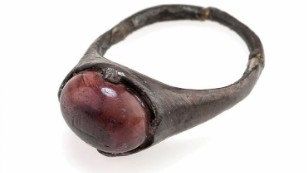Vikings ties with the Islamic caliphate existed during the 9th century. Ancient texts and tales recorded the Vikings sojourn to the Islamic caliphate but they usually include references to "giants and dragons". A finger ring excavated during the late 19th century that was inscribed with Arabic letters indicate such ties and researchers led by Stockholm University biophysicist Sebastian Wärmländer are re-examining it.

The ring was excavated Swedish grave in the town of Birka, on Björkö Island, about 19 miles (30 kilometers) from Stockholm. The town was declared a World Heritage Site by UNESCO in 1993 because it was an important Viking trading center. Arabic Kufic writing was inscribed on the ring. The letters appear to read "AL_LLH," researchers say, which they interpret as meaning "for/to (the approval of) Allah." It is only ring with an Arabic inscription ever found at a Scandinavian archaeological site, the CNN reported on 19 March 2015.
The ring belong to a women clad in traditional Viking attire but her ethnicity was unknown due to the decomposed state of the bones in the grave. "It is not impossible that the woman herself, or someone close to her, might have visited -- or even originate from -- the Caliphate (which then stretched from Tunisia to the borders of India) or its surrounding regions," the researchers said.


